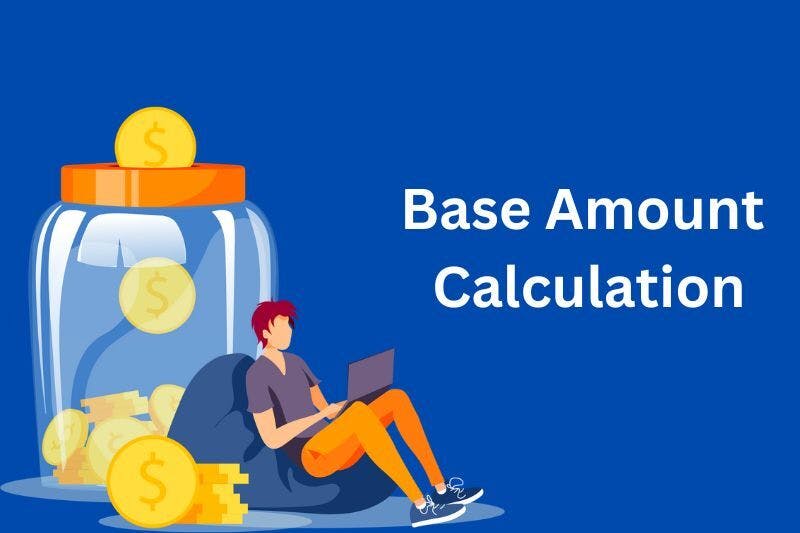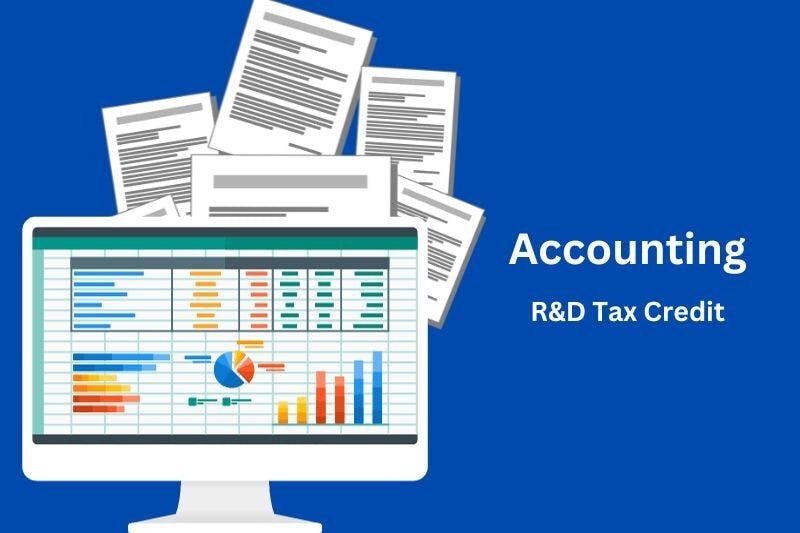
For a small business, any opportunity to reduce tax liability is a bonus. You can do this by claiming allowable expenses, deductions, and tax credits.
Reducing the tax burden allows you to keep more money in your bank account and, ultimately, the doors open. This sounds like a good idea.
Give us 5 minutes and we may save you hundreds of dollars in corporation tax by showing you the accounting for R&D tax credit and how the IRS decides whether you are eligible for this credit.
What is an R&D tax credit?
The Internal Revenue Code section 41- R&D provides credits for increasing research activities. The purpose of these credits is to reduce the tax liability of businesses that are serious about research and development.
The general rule for R&D tax credit

Research credits are calculated as 20% of the excess of the qualified research expenses over the base amount plus 20% of the basic research payments.
Let me explain these three important elements of R&D tax credit by way of practical examples.
Qualified research expenses
Two categories of R&D qualify for tax credits, namely:
In-house expenses
Contract research expenses
In-house expenses
In-house research expenses such as wages, supplies, and certain computer use costs, as well as contract research expenses, qualify for R&D credits.
Expenses must be incurred during the following activities:
Product development (tangible or intangible)
Process development or improvement (manufacturing processes, technical processes)
Technology or software development or re-development (intended for either external or internal use)
Formulas
Techniques
Inventions (patentable activities)
These activities must be aimed at improving current components of the business and involve a process of experimentation.
Certain activities are excluded, such as research of commercial production, adaptation of existing components, duplication of existing components, and research in social sciences, arts, or humanities. Land or improvement to land may not be claimed under in-house expenses.
Contract research expenses
Means 65 percent of any amount paid or incurred by the taxpayer to any person (other than an employee of the taxpayer) for qualified research.
It is also any amount paid for research in the accounting period in question that will only take place after the period has ended. If an organization pays $40,000 to a research company in 2023 and work commences in January 2024, then the $40,000 will still be eligible for calculation of the base amount in 2023.
Base amount

To explain the concept of ‘base amount,’ let’s take a walk back to childhood.
Meet 9-year-old Thomas. He wants a dog. His parents want Thomas to understand the importance of saving to get something of high value, so they open a bank account for him. Thomas has to put his money into the bank account until he has enough to purchase his dog. However, his parents also want to encourage him, so they promise that if he saves more money each month than he did the month before, they will give him a cash reward for his efforts.
The usual amount that Thomas saves each month is the base amount. Anything over the base amount will attract the reward.
This is similar to how the base amount works for development tax credit. The base amount is a historical benchmark or standard. It measures how much more an organization is spending on research and development compared to what they spent in the past.
It is calculated as the product of the fixed-based percentage and the average annual gross receipts of the taxpayer for the four years preceding the credit. The fixed percentage is determined based on the taxpayer's historical research expenses.
Small Business Example

TechStart LLC is a small software development company that started its operations in 2021. It has been investing in research and development to create innovative software products. We’ll calculate the base amount for the tax year 2024.
The first step is to calculate the historical data from 2021 to 2024. Since the company has less than four proceeding years before the calculation, the IRS provides a simplified method, often setting the fixed base percentage at a standard rate, like 3%.
Let's say the company had gross receipts of $500,000 in 2021, $600,000 in 2022 and $700,000 in 2023.
Fixed-Base Percentage: 3% (as per the simplified method for new companies)
Average Annual Gross Receipts: $600,000
Calculation: Base Amount = 3% of $600,000 = $18,000
The implications for the 2024 tax credit would be reflected as follows:
If TechStart LLC spends $50,000 on research and development and subtracts the base amount of $18,000, then it will be eligible to claim an R&D tax credit of $32,000
Basic research payment
The U.S. Government would like to encourage all businesses to participate in basic research. Basic research is about gaining new knowledge or understanding without having a specific product or application in mind.
When a company gives money to a university, research institute, or similar organization for such basic research, these payments can qualify for R&D Tax Credit. It's the government's way of saying "thank you" to businesses for supporting fundamental research.
The stipulations for this credit are:
The research must not directly benefit a product of the organization
It must be a qualified, registered organization
There must be an agreement between the organization and the business
Small Business Example
Eco Innovate is a small business specializing in eco-friendly technologies. They want to give a contribution to a university that is researching sustainable materials. Although Eco Innovate can benefit from the research, it does not directly affect a new product they want to develop.
They enter into a 12-month agreement with the university and contribute $30,000. Eco Innovate can claim a portion of the $30,000 towards their R&D tax credit.
The IRS 4-part test for eligibility for R&D tax credits
You can use this section as a guide for determining how the IRS will view your applications for research and development credit. The more ‘yes’ answers you have to these questions, the better your chances of a successful claim.
Does it lead to the creation or improvement of a product, process, or technology?
Is it technological in nature?
Was there uncertainty about the method, approach or outcome?
Was the product or process experimental?
That covers the essentials from an IRS perspective, but what about how you reflect these expenses in your accounting records?
Accounting for R&D tax credits

Understanding what the IRS accepts as R&D expenses is just one part of a successful claim. The other part is getting those expenses correctly recorded and allocated. Proper accounting practices are essential for getting this done.
One frustration that all bookkeepers, accountants, and business owners face is incorrect record keeping or loss of evidence to prove legitimate expenses.
The rule of thumb is to keep every bit of paper that you get when spending your money.
As a CPA, it’s difficult to watch my clients realize they could have reduced their tax liability substantially if they had:
1. Knowing what qualifies for deductions and credits.
2. Kept the correct paperwork
At Hall Accounting Company, we work hard to prevent this frustration and disappointment in our clients. For a small business, tax relief can mean the difference between financial breathing room and being squeezed for cash as they try to correct their business processes in the next year. We get this.
I need an appointment to discuss my expenses and get tax relief
The accounting treatment for the R&D tax credit appears in the following financials and documentation:
Income Statement (Profit and Loss Account)
Record all R&D expenses under operating expenses in your Income Statement. This includes salaries, materials and overhead costs, as mentioned above. Ensure that these expenses are identified from other general and administrative expenses.
Taxable Income
Taxable income is your net income before taxes, calculated as revenues minus expenses (including R&D expenses) on your income statement. R&D credits reduce your taxable income providing a corporation tax reduction.
Balance Sheet
If R&D tax credits cannot be fully utilized in the current year, they may be recorded as deferred tax assets on your balance sheet. Initially, however, record the full amount of estimated tax payable as a liability.
Tax Line (in financial statements)
Show the effect of development expenditure credit separately in the tax line of your income statement. This helps in understanding the impact of these credits on your overall tax expense.
Accounting Profit
This is the profit figure used for tax purposes, calculated after accounting for tax-deductible expenses, including R&D. The tax credit can increase your accounting tax profit since it reduces your tax expense.
Practical Steps for a Small Business Owner
Maintain Detailed Records: Keep detailed records of all R&D expenses, including receipts, payroll records, and contracts.
Separate R&D Expenses: Categorize R&D expenses in your accounting system to ensure they are easily identifiable.
Work with a Professional: Consult with a tax advisor or accountant who is experienced in R&D tax credits to ensure proper filing and maximization of your benefits.
Use technology to keep your records: Accounting software is an asset when it comes to record keeping. The ability to easily enter financial information and have it allocated to the right places on your financials saves you a great deal of time, energy and resources.
We use the world’s top accounting tools to bring you accurate financials and keep all your records together in one place. This way, IRS submissions are never a problem for our clients. These tools are included in all our client plans and have become a cornerstone of our accounting firm.
Yes, that sounds good. Let’s talk about how we can work together.
In Conclusion
Claiming the R&D tax credit can be a game changer for small businesses. By understanding and leveraging this aspect of the tax code, you can significantly reduce your tax liability. The key lies in meticulous record keeping, the proper categorization of records, and understanding the eligibility criteria of the IRS.
With the right approach, you can foster innovation and improve the financial health of your business. We encourage all small business owners to make the most of this opportunity afforded by the IRS.
Until next time, when we continue to look at corporation tax deduction strategies.
Cheers.
Jeremy.